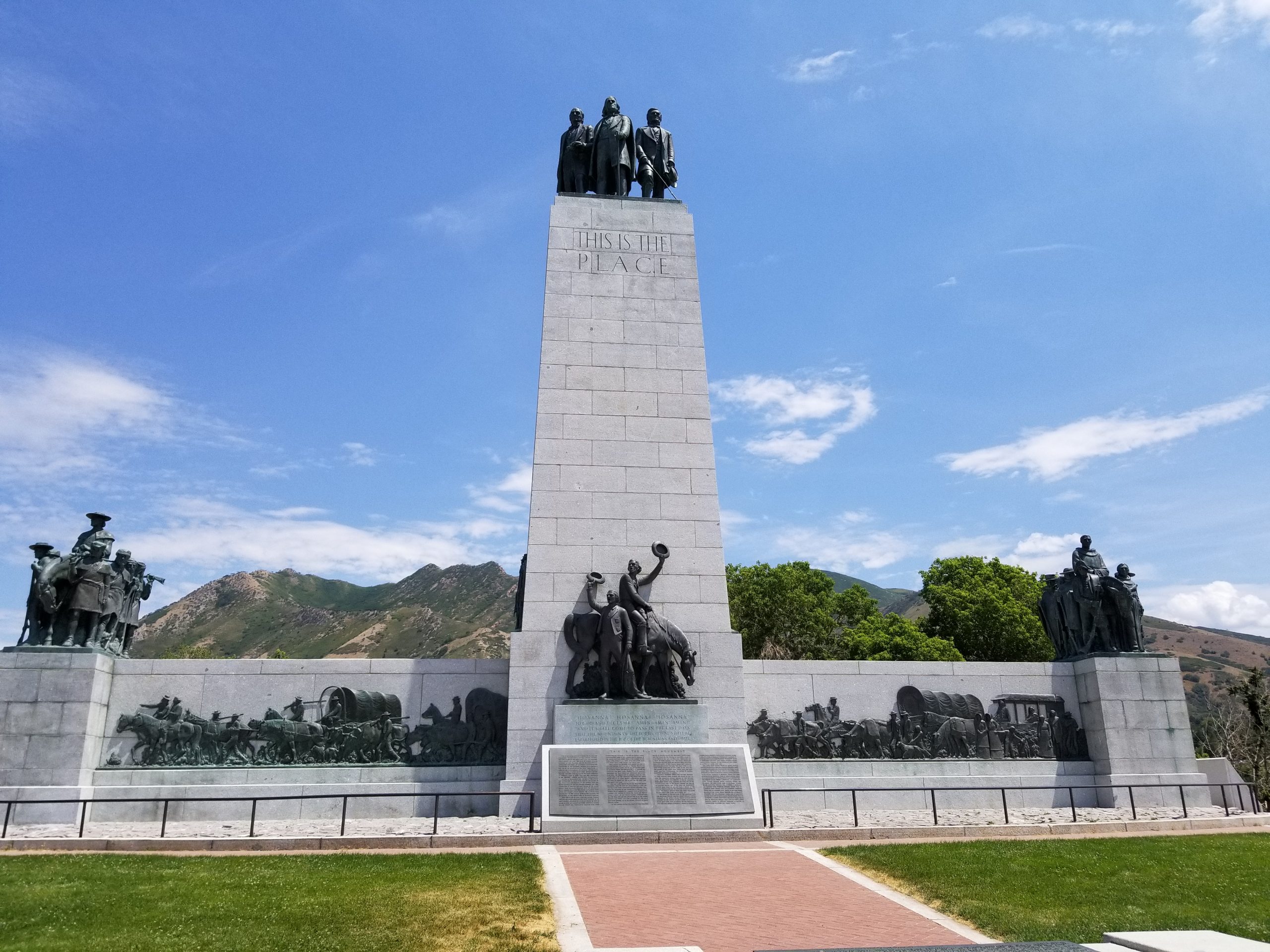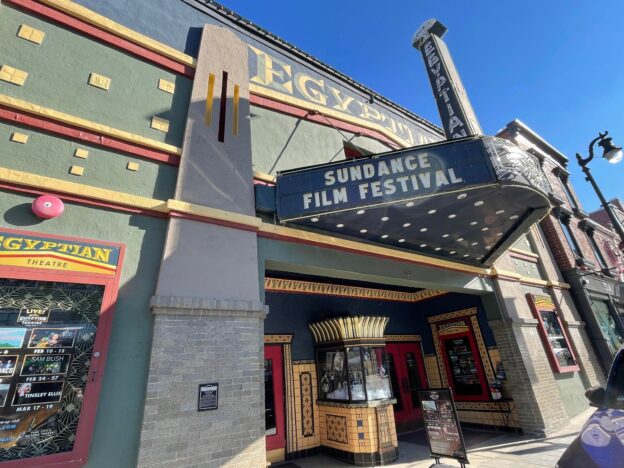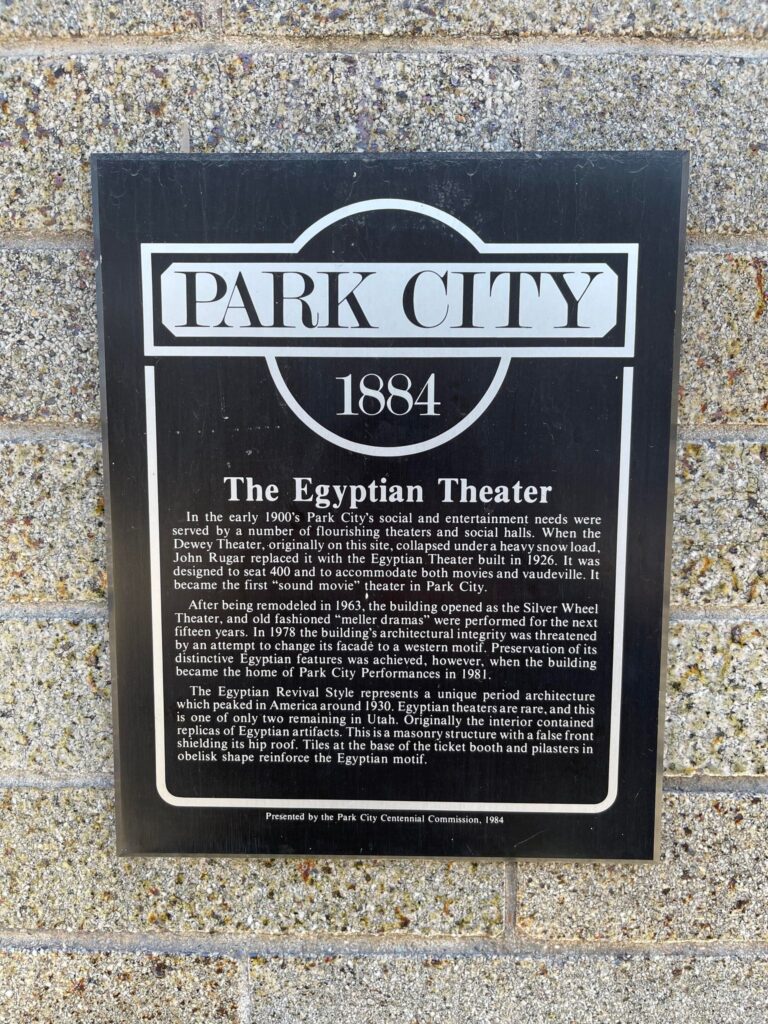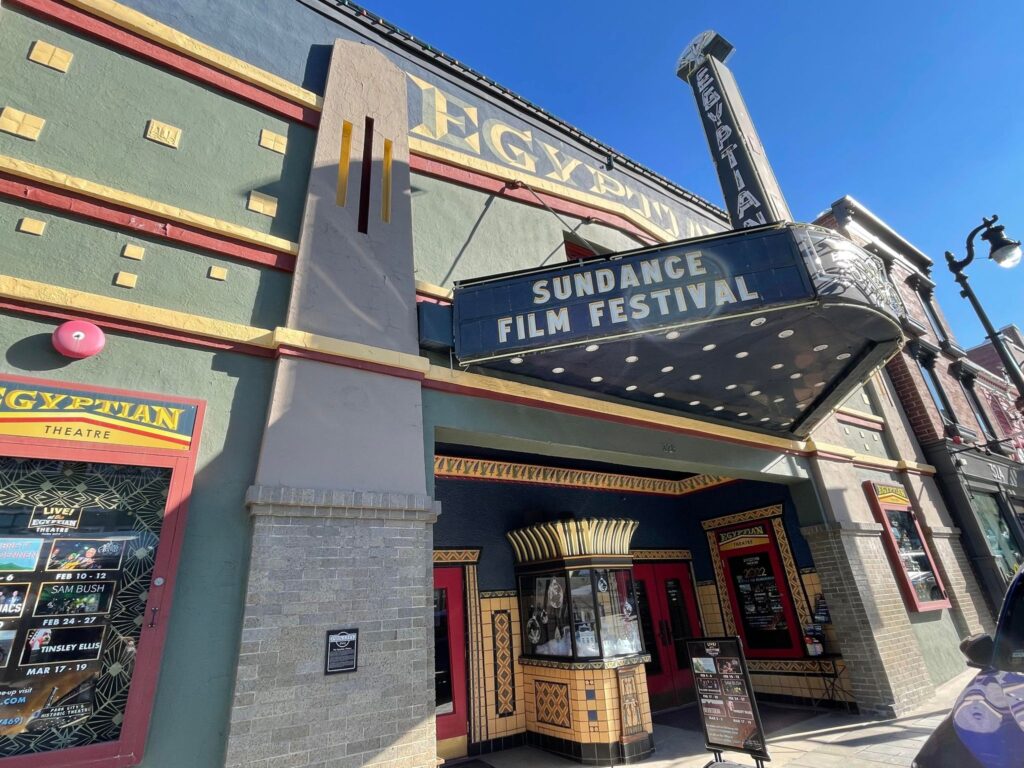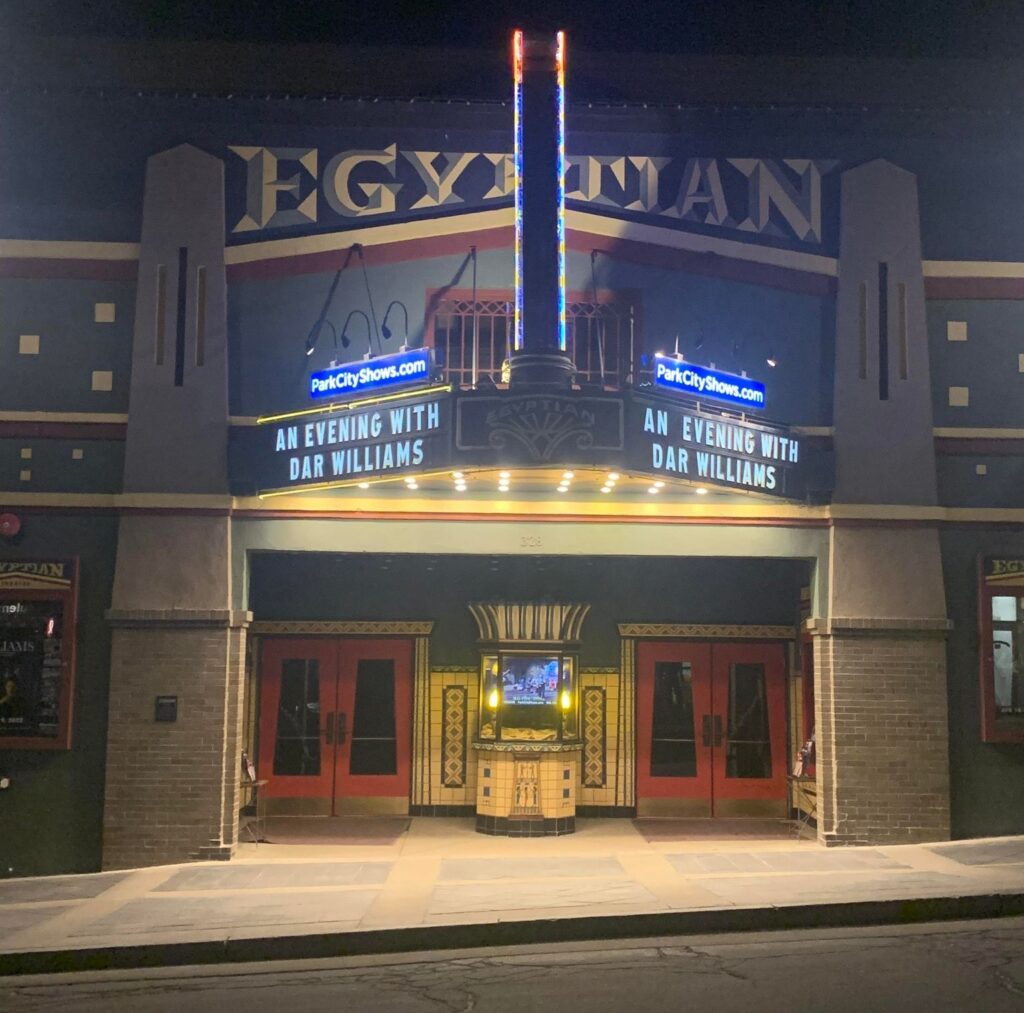write-up by Jesus Labastida Munguia
Placed by: Park City Centennial Commission
GPS Coordinates: 40.6425°N 111.495°
Historical Marker Text (1):
PARK CITY
1884
The Egyptian Theater
In the early 1900’s Park City’s social and entertainment needs were served by a number of flourishing theaters and social halls. When the Dewey Theater, originally on this site, collapsed under a heavy snow load, John Rugar replaced it with the Egyptian Theater built in 1926. It was designed to seat 400 and to accommodate both movies and vaudeville. It became the first “sound movie” theater in Park City.
After being remodeled in 1963, the building opened as the Silver Wheel Theater and old fashioned “meller dramas” were performed for the next fifteen years. In 1978 the building’s architectural integrity was threatened by an attempt to change its facade to a western motif. Preservation of its distinctive Egyptian features was achieved, however, when the building became the home of Park City Performances in 1981.
The Egyptian Revival Style represents a unique period architecture which peaked in America around 1930. Egyptian theaters are rare, and this is one of only two remaining in Utah. Originally the interior contained replicas of Egyptian artifacts. This is a masonry structure with a false front shield its hip roof. Tiles at the base of the ticket booth and pilasters in obelisk shape reinforce the Egyptian Motif.
Presented by the Park City Centennial Commission, 1984
Extended Research:
The Egyptian Theater is an iconic fixture of Utah’s Park City community, standing prominently on Main Street. Its edifice is a beautiful representation of its Egyptian Revival architecture. The history of the Egyptian Theater is just as colorful as its outside design. The site where it is located has had a longstanding reputation for being the place in Park City where members of the community could congregate to enjoy entertainment provided through local theater and arts.[1]
The history of the Egyptian theater traces its roots all the way to “the Big Fire of 1898.” The fire tore through Park City’s now historical Main Street creating a site that two businessmen, David Keith and James Ivers, found suitable to construct the Dewey Theatre– the very first iteration of the Egyptian Theater. The Dewey Theater was known for showcasing the best professional fighters and travelling theatrical troupes of the time. The old Dewey Theater even boasted a barbershop, a candy store, and a state-of-the-art floor that could be raised and lowered to suit the needs of the theater. Sadly, the reign of the famous Dewey Theater would come to an end in 1916 after a heavy snowpack that accumulated on the roof caused it to cave-in. Fortunately, the collapse took place after closing time and no one was injured.[2]
In 1926, a new theater was constructed at the old Dewey Site under a $50,000 contract.[3] The theater was designed in the style of Ancient Egyptian architecture and motifs, heavily influenced by a craze in Egyptology following the discovery of King Tutt’s tomb. The Egyptian theater offered picture shows as well as theatre performances for enjoyment. The erection of the theatre was heavily dependent on the growing demand for entertainment in Park City. John Ruger spearheaded the development project and maintained ownership until 1948 when he sold the theater to Russ Dodderman. Shortly after several changes in management, owners renamed the playhouse the Lu Ann Theater for a period thereafter.[4]
Much like the rest of the nation in the 20th century, Utah saw developments of movie theaters across the state. Many theaters of the early 20th century utilized the previous playhouse and opera house buildings and revamped the theater’s edifice with attention grabbing design motifs ranging from Spanish Colonial revival to Neoclassical architecture. This sudden possibility of movie-going ushered in a new era of connection to Main Street. The Egyptian Theater in Park City is one of two remaining Egyptian Revival theaters in the state, the other is the Peery’s Egyptian Theatre in Ogden, Utah. The attention-grabbing Egyptian architecture seen at the Egyptian Theaters are reflective of the novel craze of movie-going that took place across the United States; it is loud, exciting, and demands the attention of all who walk by it.[5]
By 1959, Art Durrant purchased the playhouse and ran it for a little more than three years before he became burnt out from managing the theater. He subsequently sold the property to a theater management company named Silver Wheel Enterprises. Silver Wheel Enterprises decided to change the name of the location once more to the Silver Wheel Theater for its opening in 1963. The Silver Wheel Egyptian theater would go through many similar changes in management and changes in entertainment, eventually becoming home to the Park City Performances (PCP), a local community theatre organization.[6]
In the twenty first century the Egyptian Theater is a historical testament to Park City’s love for entertainment. The theater today is used for community performances and film viewing, as it is one of Sundance Film Festival’s most desirable venues, where highly praised filmmakers are invited to showcase their films.
For Further Reference:
Primary Sources:
City Officials in Front of the Silver Wheel Theater (Egyptian Theater), Park City, Utah (2 Views). Photograph. Accessed May 2, 2022.
“Dewey Theater Changes Hands.” Salt Lake Tribune. February 20, 1910.
“Egyptian-American Theaters Change Hands.” Park Record. March 11, 1948.
“New Silver Wheel Enterprises Buys Lu Ann Theater in Park.” Summit County Bee and Park Record. March 4, 1963.
“New Theatre Will Be On Dewey Site.” Park Record, July 2, 1926.
“Silver Mill, Theater Group near Agreement on Egyptian.” Park Record. September 22, 1983.
Secondary Sources:
“About Us.” Park City Shows. Egyptian Theatre, December 11, 2021.
Carter, Thomas, and Peter L. Goss. “Egyptian Revival 1920-1930.” In Utah’s Historic Architecture, 1847-1940: A Guide, 135–35. Salt Lake City, UT, Utah: Center for Architectural Studies, Graduate sic School of Architecture, University of Utah, & Utah State Historical Society, 1991.
Roper, Roger. “Going to the Movies: A Photo Essay of Theaters.” Utah Historical Quarterly 67, no. 2 (1999): 111–22.
[1] Carter, Thomas, and Peter L. Goss. “Egyptian Revival 1920-1930. In Utah’s
Historic Architecture, 1847-1940: A Guide, 135–35. Salt Lake City, UT, Utah: Center for
Architectural Studies, Graduate sic School of Architecture, University of Utah, & Utah
State Historical Society, 1991.
[2] “New Silver Wheel Enterprises Buys Lu Ann Theater in Park.” Summit County Bee and Park Record. March 4, 1963.
[3] “New Theatre Will Be On Dewey Site.” Park Record, July 2, 1926.
[4] “New Theatre Will Be On Dewey Site.” Park Record, July 2, 1926.
[5] Roper, Roger. “Going to the Movies: A Photo Essay of Theaters.” Utah Historical Quarterly 67, no. 2 (1999): 111–22.
[6] “Silver Mill, Theater Group near Agreement on Egyptian.” Park Record. September 22, 1983.
